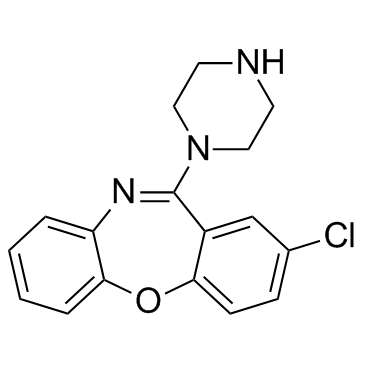Amoxapine-associated acute respiratory distress.
Masaru Ando, Eishi Miyazaki, Ryu-Ichi Takenaka, Toshiyuki Okubo, Osamu Matsuno, Shin-Ichi Nureki, Kazunobu Ito, Tomiyasu Tsuda, Toshihide Kumamoto
Index: Respirology 13(1) , 149-51, (2008)
Full Text: HTML
Abstract
A 37-year-old woman was admitted to our hospital because of acute respiratory distress. Two weeks previously, amoxapine (75 mg/day) had been administered for the first time. Ten days later she developed a high fever, severe hypoxaemia and pulmonary infiltrates on chest CT, including patchy areas of ground-glass opacity, thickening of the interlobular septae and bronchial walls and pleural effusions. BAL showed a predominance of neutrophils, lymphocytes and erythrocytes but not eosinophils. Amoxapine was stopped, resulting in complete resolution of the pulmonary infiltrates. When the patient was re-exposed to amoxapine (52.5 mg total dose), high fever, reduced SaO(2) and pulmonary infiltrates reappeared. We concluded that acute respiratory distress may be associated with amoxapine treatment.
Related Compounds
| Structure | Name/CAS No. | Molecular Formula | Articles |
|---|---|---|---|
 |
Amoxapine
CAS:14028-44-5 |
C17H16ClN3O |
|
Inhibition of G protein-activated inwardly rectifying K+ cha...
2011-01-01 [PLoS ONE 6(12) , e28208, (2011)] |
|
Investigation of the disposition of loxapine, amoxapine and ...
2012-01-01 [J. Pharm. Biomed. Anal. 58 , 83-93, (2012)] |
|
Validation of HPLC-MS/MS methods for analysis of loxapine, a...
2010-12-01 [Bioanalysis 2(12) , 1989-2000, (2010)] |
|
Potential repurposing of known drugs as potent bacterial β-g...
2012-08-01 [J. Biomol. Screen. 17(7) , 957-65, (2012)] |
|
Pharmacological properties of glycine uptake in the developi...
2006-09-01 [Neurochem. Int. 49(4) , 342-6, (2006)] |